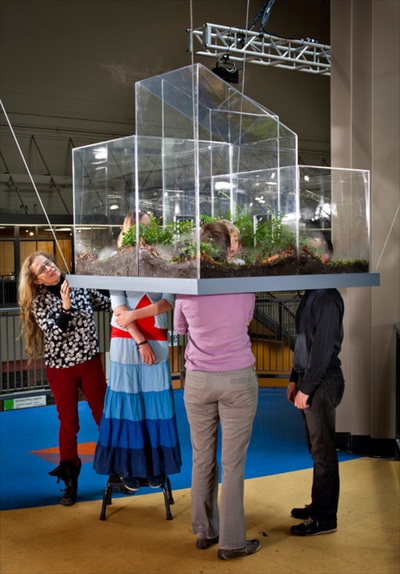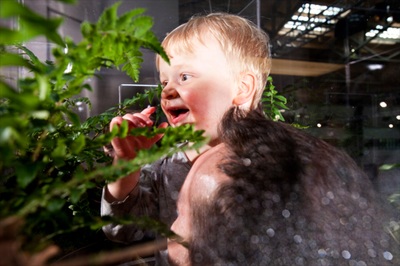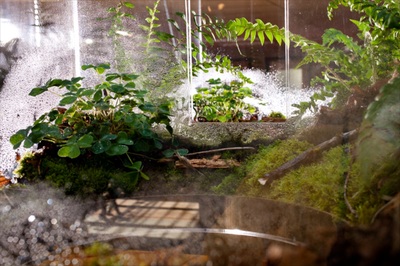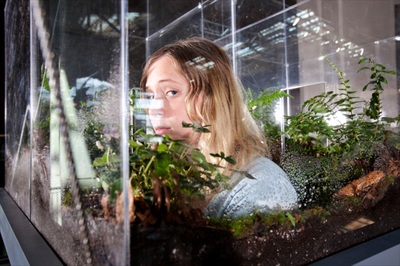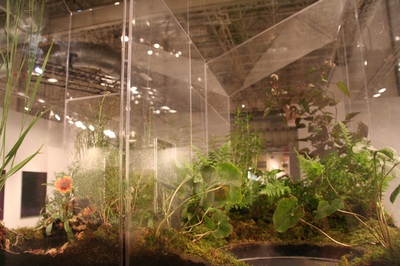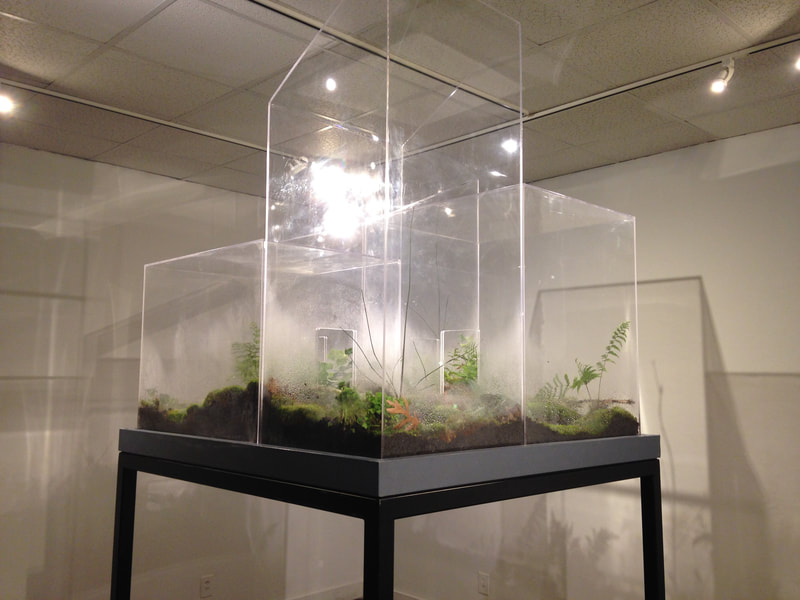METROPOLIS
Metropolis
Acrylic, aluminum, rigging cables or stand, hardware, soil, native plants, stepstools
Metropolis places a patch of plants, soil and moss from the Northwest forest within the plastic form suggesting a high-rise city. Up to four people can occupy the space by placing their heads inside the biosphere for an up-close and immersive view of the landscape and each other. In each location where the piece is installed, plants are selected for their meaning and relevance to the venue.
Commissioned by the Seattle Center Foundation for the Next 50 celebration of the 50th anniversary of the 1962 World’s Fair, Metropolis has since been installed in Chicago, Virginia and Massachusetts and currently lives at the Schuylkill Center for Environmental Education in Philadelphia.
Image by Spike Mafford
Acrylic, aluminum, rigging cables or stand, hardware, soil, native plants, stepstools
Metropolis places a patch of plants, soil and moss from the Northwest forest within the plastic form suggesting a high-rise city. Up to four people can occupy the space by placing their heads inside the biosphere for an up-close and immersive view of the landscape and each other. In each location where the piece is installed, plants are selected for their meaning and relevance to the venue.
Commissioned by the Seattle Center Foundation for the Next 50 celebration of the 50th anniversary of the 1962 World’s Fair, Metropolis has since been installed in Chicago, Virginia and Massachusetts and currently lives at the Schuylkill Center for Environmental Education in Philadelphia.
Image by Spike Mafford
